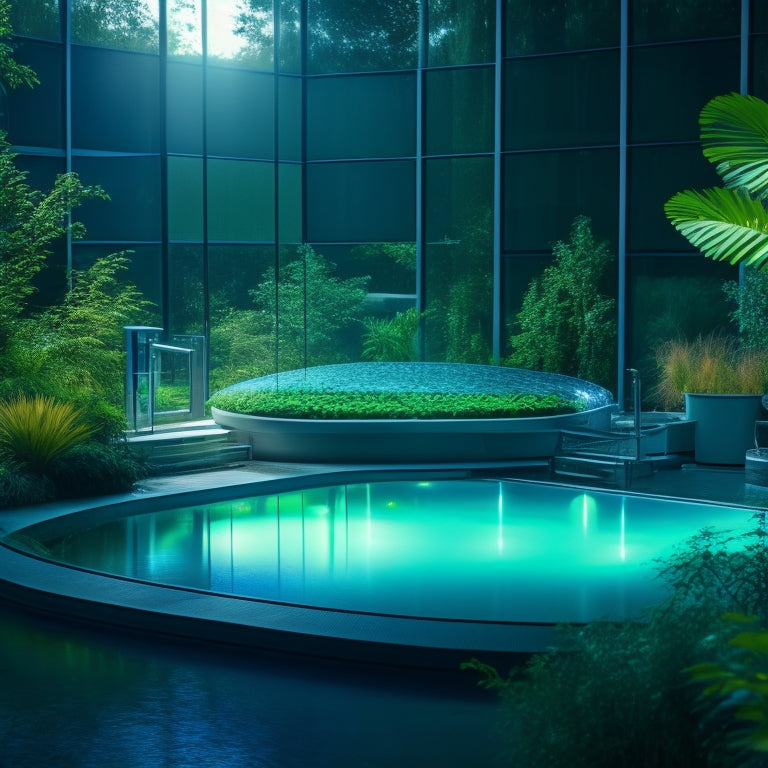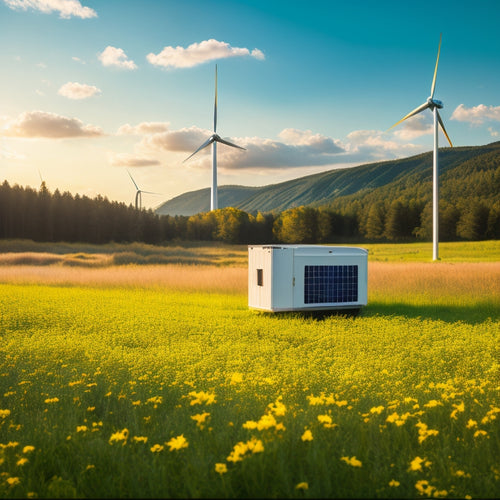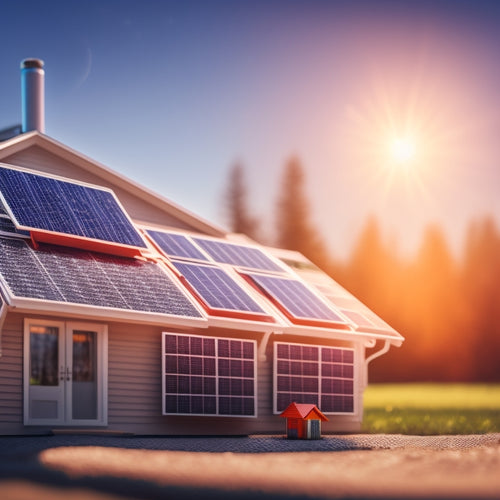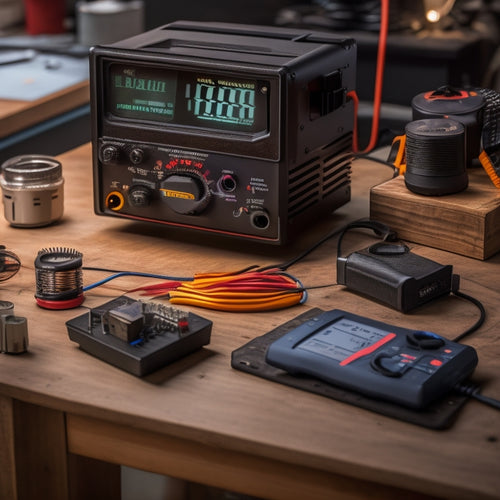
What Contaminants Does Ultraviolet Water Treatment Remove
Share
Ultraviolet water treatment effectively removes a variety of harmful contaminants. It targets pathogens such as bacteria, viruses, and protozoa, making water safer for consumption. Specifically, it neutralizes dangerous microorganisms like E. coli, Salmonella, Hepatitis A, and Giardia. Additionally, UV treatment reduces certain chemical contaminants, including chlorine byproducts and volatile organic compounds, without introducing harmful substances. This method enhances water quality while maintaining its taste and composition. Proper implementation and monitoring of the system guarantee peak performance. For a deeper understanding of how this technology works and its benefits, you might want to investigate more detailed aspects surrounding it.
At a Glance
- UV water treatment effectively eliminates bacterial pathogens such as E. coli and Salmonella, ensuring safe drinking water.
- It neutralizes viral pathogens, including Hepatitis A and Norovirus, reducing the risk of waterborne diseases.
- Protozoan cysts like Giardia and Cryptosporidium are targeted and inactivated by UV light, enhancing water safety.
- The system reduces harmful chemical compounds, including chlorine byproducts and volatile organic compounds (VOCs).
- UV treatment excels in eliminating microorganisms resistant to traditional chemical disinfection methods, improving overall water quality.
Proven Pathogen Elimination Effectiveness
Ultraviolet (UV) light effectively disrupts the DNA or RNA of various pathogens, rendering them inactive.
This technology is particularly beneficial in remote areas or disaster zones where access to clean water is limited, ensuring safe drinking water from potentially contaminated sources.
You'll find that this technology targets a broad range of microorganisms, including bacteria, viruses, and protozoa.
Understanding the specific mechanisms and the types of pathogens affected is essential for evaluating solar-powered water purifiers.
UV Light Mechanism
When water flows through a UV treatment system, it's exposed to specific wavelengths of ultraviolet light that effectively inactivate pathogens. This mechanism relies on UV light applications that target the genetic material of microorganisms, disrupting their DNA or RNA and preventing them from reproducing. As a result, pathogens like bacteria, viruses, and protozoa become incapable of causing illness.
The effectiveness of UV water treatment hinges on several factors, including the intensity of the UV light, the exposure time, and the clarity of the water. By optimizing these parameters, you can guarantee maximum elimination of harmful contaminants.
UV light doesn't introduce any chemicals into your water, preserving its taste and composition—one of the significant UV water benefits.
Moreover, unlike conventional methods, UV treatment is quick and requires minimal maintenance. It operates silently and doesn't generate hazardous byproducts, making it an environmentally friendly choice.
This technology enables you to take control of your water quality, guaranteeing safety without compromising your freedom to enjoy clean, pure water. Embracing UV treatment means embracing a reliable, efficient, and sustainable solution for pathogen elimination.
Pathogen Types Targeted
While various water treatment methods target a wide array of pathogens, UV treatment has proven particularly effective against a specific set of microorganisms. This method excels in eliminating bacterial pathogens such as E. coli and Salmonella, which are responsible for numerous waterborne diseases.
By employing the germicidal effectiveness of the UV range, you can considerably reduce the presence of these harmful bacteria in your water supply.
Moreover, UV treatment effectively targets viral pathogens like Hepatitis A and Norovirus, which pose serious health risks.
The treatment's efficiency is further highlighted by its ability to neutralize protozoan cysts, including Giardia and Cryptosporidium, notorious for their resistance to chemical disinfectants.
Enhanced Water Safety Assurance
In evaluating enhanced water safety assurance, you'll focus on pathogen elimination efficiency and chemical contaminant reduction.
By implementing advanced ultraviolet treatment systems, you can greatly improve the reliability of water safety. These systems employ UV-C technology to effectively kill bacteria and viruses, ensuring that harmful microorganisms are efficiently targeted.
This approach not only addresses harmful microorganisms but also various chemical residues, ensuring thorough water quality.
Pathogen Elimination Efficiency
Ultraviolet (UV) water treatment systems excel in pathogen elimination efficiency, greatly enhancing water safety assurance. These systems are designed to tackle a wide range of pathogens, including bacteria, viruses, and protozoa. However, understanding pathogen elimination involves recognizing contaminant variability and how it impacts treatment standards.
| Pathogen Type | UV Dose (mJ/cm²) | Elimination Efficiency (%) |
|---|---|---|
| E. coli | 5-30 | 99.99% |
| Giardia lamblia | 10-20 | 99.9% |
| Cryptosporidium | 20-40 | 99.9% |
| Hepatitis A virus | 20-30 | 99.99% |
| Norovirus | 30-40 | 99.99% |
These values illustrate that UV systems can effectively reduce pathogen concentrations to meet or exceed treatment standards. It's important to recognize that the effectiveness of UV treatment can vary based on factors like water quality and turbidity. As a result, regular monitoring of these variables is vital to maintain peak performance and guarantee safe drinking water. With the right system in place, you can confidently trust in the pathogen elimination capabilities of UV water treatment.
Chemical Contaminant Reduction
Chemical contaminants pose considerable risks to water safety, and effective reduction is vital for safeguarding public health. Ultraviolet (UV) water treatment plays an essential role in minimizing the presence of harmful chemical compounds.
While UV systems primarily target pathogens, they also assist in reducing certain chemical contaminants through advanced treatment processes. By employing UV light, you can deactivate or break down some specific chemical compounds, such as chlorine byproducts and volatile organic compounds (VOCs).
Though UV treatment doesn't eliminate all chemicals, it greatly improves water safety when used as part of an extensive water treatment strategy. Combining UV treatment with filtration and adsorption processes guarantees a wider range of contaminant reduction.
It's important to understand that the effectiveness of UV treatment on chemical contaminants depends on factors such as water quality, UV intensity, and exposure time. To achieve the best results, you should regularly monitor and adjust these parameters.
Incorporating UV treatment into your water purification system not only increases efficiency but also enables you to make informed decisions about your water safety. Ultimately, the integration of UV technology can lead to a safer, healthier water supply for you and your community.
Key System Components Overview
To effectively understand ultraviolet water treatment systems, you need to focus on two key components: UV lamp functionality and the water flow system.
The UV lamp generates the necessary light to inactivate contaminants, while the water flow system guarantees ideal exposure to this UV light.
Proper maintenance of these systems, including regular assessments similar to battery water maintenance, is essential for achieving efficient water purification and maintaining system integrity.
Both elements are vital for achieving efficient water purification and maintaining system integrity.
UV Lamp Functionality
While many components contribute to the effectiveness of a UV water treatment system, the functionality of the UV lamp is paramount. This lamp emits ultraviolet light at specific wavelengths, typically around 254 nanometers, which is essential for inactivating microorganisms. The intensity and consistency of this light directly affect the system's efficacy in disinfection.
To guarantee peak performance, you must prioritize lamp maintenance. Regular inspection and cleaning of the lamp's quartz sleeve are necessary to prevent buildup that can hinder light transmission.
Additionally, monitor the bulb lifespan closely; most UV lamps have a limited operational life, often around 9,000 to 12,000 hours. After this period, even if the bulb appears illuminated, its effectiveness diminishes considerably, potentially compromising water safety.
It's critical to replace the bulb according to the manufacturer's recommendations to maintain the system's integrity. Staying vigilant about lamp maintenance not only maximizes disinfection but also promotes economic efficiency by reducing the need for frequent replacements.
Water Flow System
The water flow system is essential for the overall efficiency of UV water treatment. It guarantees that water passes through the UV reactor at the correct flow rate, allowing for ideal exposure to ultraviolet light.
Proper system design is significant; if the water moves too quickly, it won't receive sufficient UV exposure to effectively inactivate contaminants. Conversely, if the flow is too slow, you risk overexposure that could damage the UV lamp or reduce its lifespan.
Water pressure plays an important part in this system. You need to maintain a consistent pressure to guarantee uniform flow through the reactor. Fluctuating water pressure can lead to uneven flow rates, which compromises the effectiveness of the treatment.
Regular monitoring and adjustments are essential to keep the water pressure within the recommended range. Incorporating a pressure regulator can help maintain stability and guarantee that the system operates effectively.
Selecting Based on Flow Rate
When selecting an ultraviolet water treatment system, understanding the flow rate is essential for effective operation.
This is particularly important when considering sustainable materials that can enhance overall system efficiency.
You'll need to match the system's capacity with your specific water flow demands to guarantee optimal contaminant reduction.
Failure to do so can lead to inadequate treatment and potential health risks.
Importance of Flow Rate
Selecting an appropriate flow rate is vital for maximizing the effectiveness of ultraviolet (UV) water treatment systems. The flow rate directly impacts the system's performance, influencing how effectively UV light can inactivate contaminants. A higher flow rate may reduce the time water spends in the UV chamber, limiting exposure and potentially compromising disinfection.
Conversely, a flow rate that's too low could lead to unnecessary energy expenditure and inefficiencies.
When determining the best flow rate, consider the specific contaminants you're targeting and the desired level of disinfection. Each UV system has a maximum flow rate it can handle while maintaining effective treatment. If you exceed this rate, you may not achieve the necessary dosage required for adequate pathogen inactivation.
It's also important to account for variations in water quality and turbidity, as these factors can necessitate adjustments in flow rate.
By carefully selecting your flow rate, you guarantee that your UV water treatment system operates at peak efficiency, providing reliable protection against harmful microorganisms while maintaining the integrity of your water supply.
Prioritize flow rate in your planning to maximize the benefits of your UV treatment solution.
Matching System Capacity
Matching system capacity to flow rate is vital for effective UV water treatment. When you select a UV system, it's important to make sure that it can accommodate your specific flow requirements. This process involves precise system sizing and capacity planning. If the system's capacity exceeds the needed flow rate, you risk underutilizing the technology. Conversely, if the system's capacity is insufficient, it won't effectively treat the water, leaving contaminants behind.
To help you understand the relationship between flow rate and system capacity, consider the following table:
| Flow Rate (GPM) | Recommended UV System Capacity (GJ) |
|---|---|
| 5 | 10 |
| 10 | 20 |
| 15 | 30 |
In this table, GPM stands for gallons per minute, and GJ indicates the system's capacity in gallons per hour. When evaluating your needs, factor in peak flow demand and daily usage to guarantee ideal performance. By aligning your system capacity with your flow rate, you'll maximize the effectiveness of your UV water treatment system, providing safe and clean water for your needs.
Lower Energy Consumption Required
When you consider ultraviolet water treatment systems, you'll find that energy-efficient technology plays a vital role.
These systems require markedly lower energy consumption compared to traditional methods, optimizing operational costs while maintaining effectiveness.
Energy Efficient Technology
Ultraviolet (UV) water treatment systems have evolved considerably, incorporating energy-efficient technologies that drastically reduce energy consumption while maintaining high purification standards. By utilizing these advanced systems, you not only guarantee clean water but also adopt sustainable practices that support environmental stewardship.
Here's a look at how energy efficiency in UV systems translates to tangible benefits:
| Feature | Benefits | Impact |
|---|---|---|
| Low Power Consumption | Reduced energy bills | Notable cost savings |
| Compact Design | Requires less space | Easier installation |
| Long Lamp Life | Fewer replacements needed | Less waste generation |
| Smart Technology | Optimizes energy use | Environmentally friendly |
As you consider UV water treatment for your needs, think about the freedom that comes with knowing you're making a responsible choice. You can achieve high-quality water purification while minimizing your carbon footprint and conserving resources. The cost savings from reduced energy consumption can also notably enhance your financial freedom, allowing you to allocate funds elsewhere. Adopting these technologies means aligning your water treatment solution with both economic and ecological goals.
Frequently Asked Questions
Can Ultraviolet Treatment Remove Heavy Metals From Water?
Ultraviolet treatment doesn't remove heavy metals from water. Instead, it effectively targets microorganisms, improving water quality. To address heavy metals, consider complementary methods like filtration or reverse osmosis for thorough water purification.
Is UV Treatment Effective Against Chemical Contaminants?
Oh sure, UV treatment's like a superhero for water! But when it comes to chemical breakdown, it's not quite effective. UV effectiveness shines on microbes, leaving chemical contaminants to laugh in the background.
How Often Should UV Lamps Be Replaced?
You should replace UV lamps every 12 to 18 months, depending on their lifespan. Regularly check your maintenance schedule to guarantee peak performance and effective disinfection, preventing potential issues with water quality and safety.
Does UV Treatment Affect Water Taste or Odor?
Does UV treatment affect water's taste or odor? It often leads to taste improvement and odor reduction, ensuring your water's quality remains high. You'll notice a cleaner, fresher experience without compromising safety or effectiveness.
Is Pre-Filtration Necessary Before UV Treatment?
You'll find pre-filtration necessary for enhancing UV treatment efficiency. It reduces particulates and organic matter, improving UV light penetration. Common pre-filtration methods include sediment filters and activated carbon, maximizing water quality and ensuring peak UV performance.
Explore More
To sum up, ultraviolet water treatment's powerful pathogen purification process greatly safeguards your supply. By effectively eliminating harmful microorganisms and ensuring improved water safety, you're investing in a reliable and resource-efficient solution. With careful consideration of system components and flow rates, you can achieve peak performance. Adopt this innovative technology to enhance your water quality standards and enjoy the peace of mind that comes with pristine, pathogen-free hydration. It's a smart step towards safer, sustainable water solutions.
Related Posts
-

Sustainable and Eco-Friendly Generators for a Reduced Carbon Footprint
Sustainable and eco-friendly generators are perfect for cutting your carbon footprint and increasing energy efficienc...
-

A Beginner's Guide to Navigating the Solar Investment Tax Credit
You're eligible to claim a significant Solar Investment Tax Credit (ITC) of 30% of total installation costs, but mane...
-

Key Features of a DC to AC Converter
A DC to AC converter features high efficiency and conversion rates, which reduce energy costs and improve performance...


